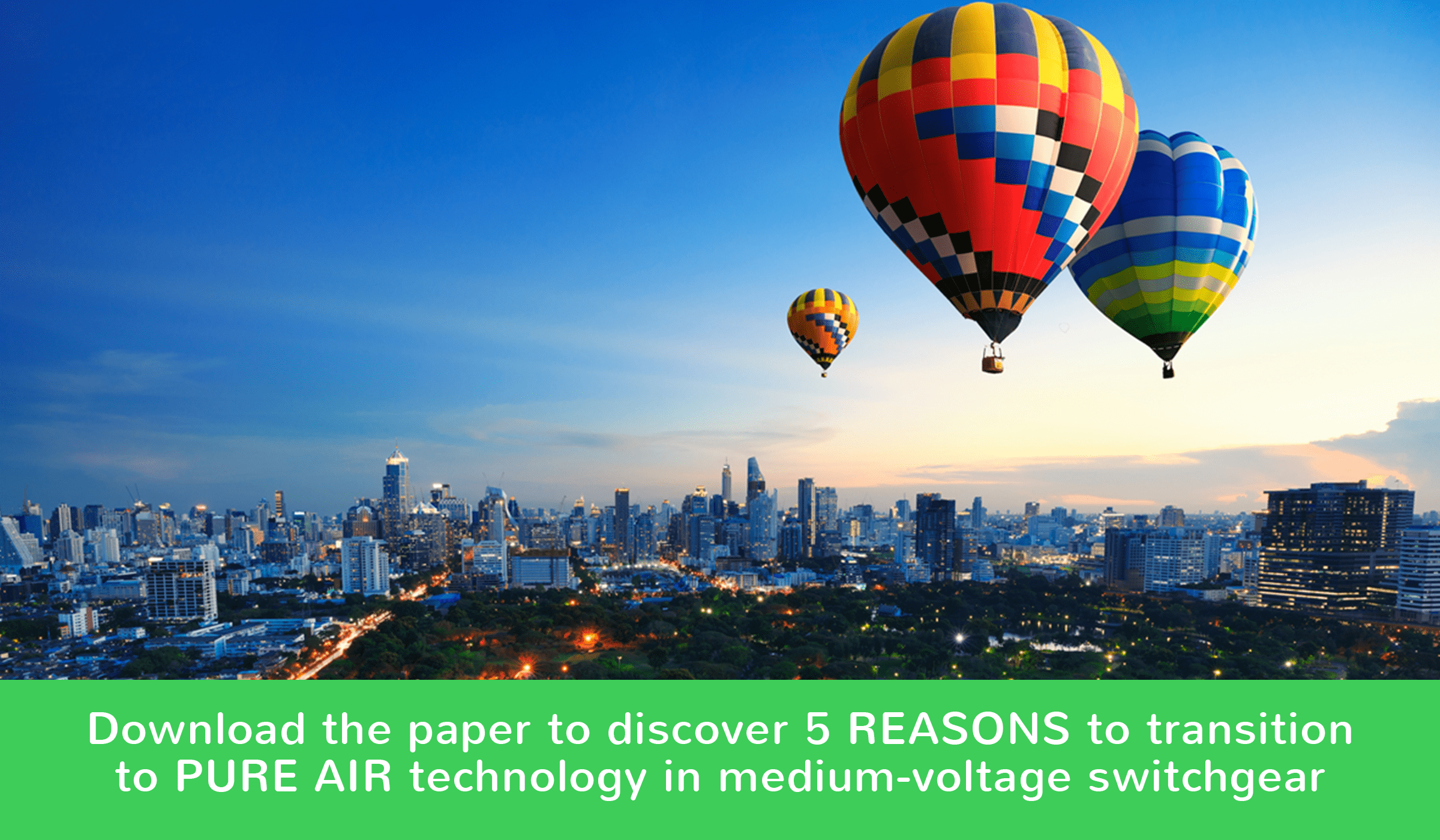Although you may not see them, switchgear are everywhere. They are essential electrical equipment for the grid, for industrial applications, and for large buildings. Over 30 million units of medium-voltage switchgear installed worldwide use sulphur hexafluoride (SF6), a highly trusted technology.
What’s SF6?
SF6 is a man-made gas that for decades has been widely used in high and medium voltage electrical equipment, like switchgear, as an insulating and breaking medium. The gas owes its popularity to its insulating and current breaking properties, thermal capacity, and stability. It’s also inert, non-flammable, and completely non-toxic in its pure form. And crucially for the many tight spaces into which switchgear must be squeezed, SF6’s high insulating property made it possible to significantly reduce the size of switchgear.
Sounds great, right? Well, not exactly. There are some strong motivations for transitioning away from SF6 to an innovative new alternative that uses only pure air:
#1: Pure Air is Superior to a Strong Greenhouse Gas
SF6 has a global warming potential (GWP) 23,500 times greater than that of CO2. The GWP metric was developed to compare the global warming impacts of different gases. It is a relative measure of how much heat a greenhouse gas traps in the atmosphere. Specifically, it is a measure of how much energy the emissions of 1 ton of gas will absorb over a given period of time, relative to the emissions of 1 ton of carbon dioxide (GWP=1). The larger its GWP, the more the gas in question warms the Earth compared to CO2 over that time period. SF6 is one of six types of greenhouse gases targeted by the Kyoto Protocol and European Directive 2003/87 (Greenhouse Emission allowance trading).
Each typical load break switch, part of a unit of switchgear, has an average of 1 kg of SF6 inside it. If 1kg were to be mistakenly released into the atmosphere, it would have the same potential environmental impact as driving a car about 200,000 kilometers (a typical vehicle emits around 120g of CO2 per kilometer).
Multiply that times 30 million switchgear units and it is becomes clear why choosing the best alternative to SF6 is necessary.
Pure air is the ultimate replacement of the greenhouse gas. It makes the concerns around GWP obsolete, as it has none. But more than that, its environmental safety is fully transparent.
#2: Pure Air Requires No Recycling
The pure air we breathe every day requires no recycling, naturally. The same cannot be said of SF6 or other man-made gases. When an SF6 switchgear unit reaches the end of its operational life, the gas is ideally recaptured, reprocessed, and reused. If it is handled within a closed system until the end of its lifecycle, the amount of leakage can be dramatically reduced, thus reducing its environmental impact. With pure air, no such concern exists.
Unfortunately, SF6 end-of-life procedure is not always completed, and rules – when and where they exist – are often not properly enforced. SF6, after use, is considered hazardous waste by some government agencies because of the toxic byproducts that result from current breaking operations.
Additionally, end-of-life treatment of SF6, or other man-made gases, can be costly – about 20% of the price of the equipment itself. It involves numerous steps, including collection, recovery, and neutralization before recycling or destroying the gas. Only authorized hazardous waste managers can handle, transport, recycle, or destroy gases according to some national or regional regulations and standards. Using a pure air solution helps eliminate the need to produce SF6, drastically reduces switchgear’s environmental impact, and avoids the end-of-life recycling process.
Interested in the other 3 reasons?
Read the free white paper: 5 Reasons to Transition from SF6 to Pure Air in MV Switchgear.






Conversation
Very good read. In Services, we must be a strong specifier of all ecofit, modernization solutions to replace SF6 equts with pure air, and develop a TCO approach to maintain these types of equipment and reinforce the sustainability for the next 25 years.